Tokyo, Japan’s sprawling capital, is a city that effortlessly blends the old and the new, offering visitors a rich tapestry of experiences. From towering skyscrapers to tranquil temples, Tokyo is a city where tradition meets innovation. In this guide, we’ll explore the top things to do in Tokyo, whether you’re a first-time visitor or a seasoned traveler. Each activity is designed to help you dive deep into the city’s unique culture, history, and vibrant energy.
1. Visit the Iconic Tokyo Tower

Tokyo Tower, standing at 333 meters, is an iconic symbol of the city and a must-visit landmark. Modeled after the Eiffel Tower in Paris, this red and white structure is not just a communication tower but also a popular tourist attraction. Visitors can ascend to the observation decks, located at 150 meters and 250 meters, to get panoramic views of the city. On a clear day, you might even catch a glimpse of Mount Fuji in the distance.
The tower is more than just a viewpoint; it also houses museums, restaurants, and souvenir shops. At night, Tokyo Tower is beautifully illuminated, making it a perfect spot for photography enthusiasts. According to the Tokyo Metropolitan Government, Tokyo Tower attracts over 3 million visitors annually, making it one of the city’s most visited sites.
Travel Tip: Arrive early in the morning or late in the evening to avoid the crowds and enjoy a more peaceful experience.
2. Explore the Bustling Shibuya Crossing

Shibuya Crossing is often referred to as the busiest pedestrian crossing in the world. Located right outside Shibuya Station, this iconic intersection sees thousands of people crossing from all directions at once, especially during peak hours. It’s a sight to behold and a quintessential Tokyo experience.
Beyond the crossing itself, Shibuya is a vibrant district filled with shopping centers, restaurants, and entertainment venues. The area is particularly popular with young people, and you’ll find everything from the latest fashion trends to quirky themed cafes. Don’t miss the famous statue of Hachiko, the loyal dog, which stands outside Shibuya Station. It’s a popular meeting spot and a beloved symbol of loyalty in Japan.
Travel Tip: For the best view of the crossing, head to the second floor of the Starbucks in the Tsutaya building, where you can enjoy a coffee while watching the organized chaos below.
3. Discover Serenity at Meiji Shrine
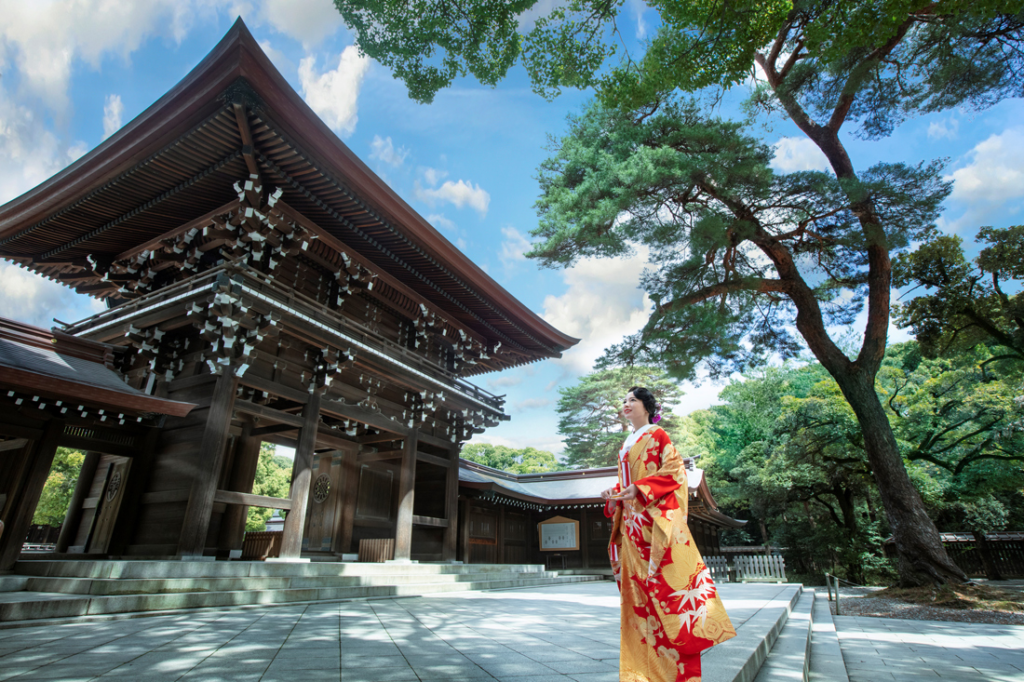
Amid the bustling city lies the tranquil Meiji Shrine, dedicated to Emperor Meiji and Empress Shoken. Located near Harajuku Station, this Shinto shrine is surrounded by a lush forest that provides a peaceful escape from the urban hustle. The shrine’s massive torii gate marks the entrance to a serene path leading to the main complex.
Visitors can partake in traditional Shinto practices, such as writing wishes on wooden plaques (ema) or participating in a cleansing ritual at the water pavilion. The shrine is especially popular during the New Year, when millions of people visit to pray for good fortune.
Travel Tip: Visit Meiji Shrine early in the morning to enjoy the peaceful atmosphere without the crowds. Combine your visit with a stroll through the nearby Yoyogi Park, one of Tokyo’s largest green spaces.
4. Electric Town of Akihabara
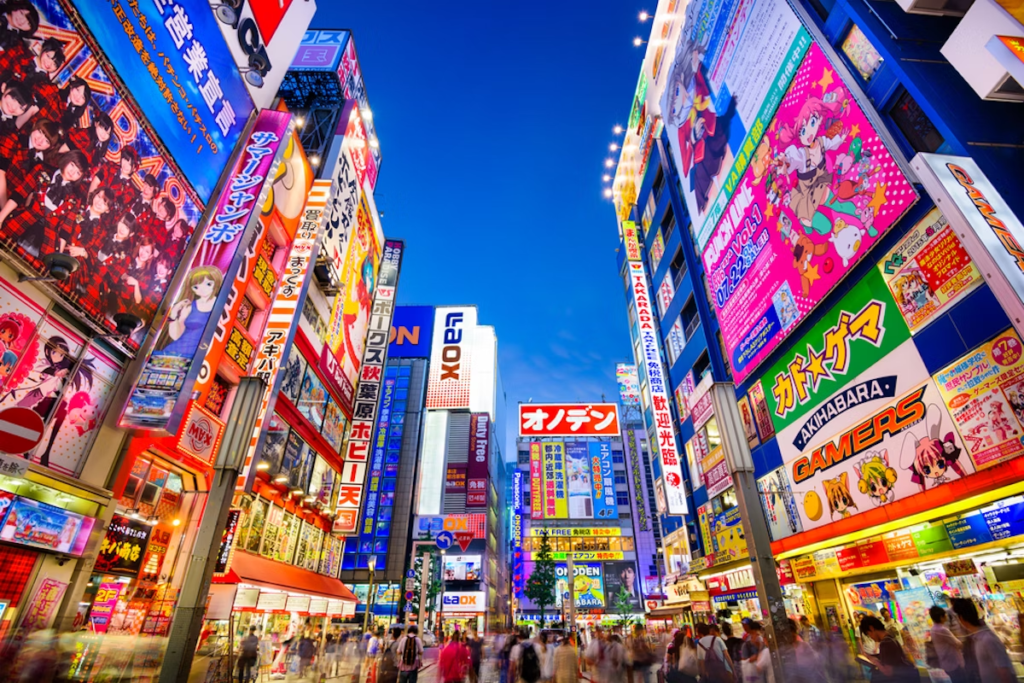
Akihabara, known as Tokyo’s “Electric Town,” is a paradise for tech enthusiasts, gamers, and anime fans. This district is packed with electronics stores, arcades, and shops selling everything from the latest gadgets to rare anime collectibles. Akihabara has also become a hub for the otaku culture, where fans of manga and anime can immerse themselves in their favorite worlds.
One of the highlights of Akihabara is the numerous maid cafes, where waitresses dressed in maid costumes serve you in a playful, themed environment. These cafes have become a unique part of Tokyo’s pop culture scene.
Travel Tip: If you’re interested in purchasing electronics, do some research beforehand to compare prices and ensure you’re getting the best deal. Also, many stores in Akihabara offer tax-free shopping for tourists.
5. The Historic Asakusa and Senso-ji Temple
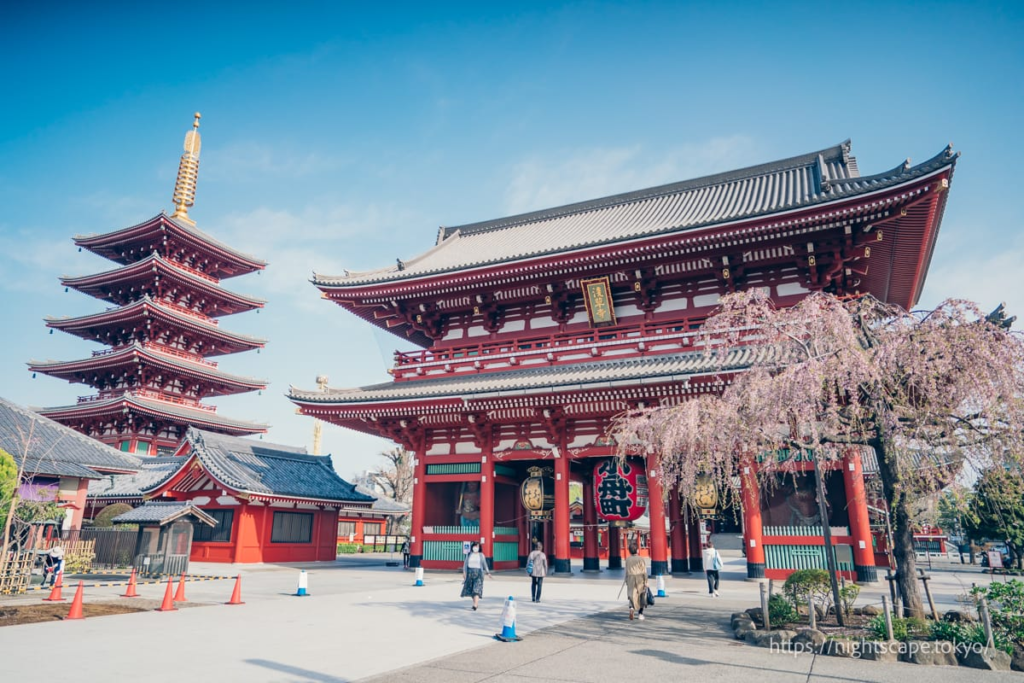
Asakusa offers a glimpse into Tokyo’s past with its historic streets and traditional shops. The main attraction here is Senso-ji, Tokyo’s oldest and most significant Buddhist temple. Founded in 628 AD, Senso-ji is dedicated to Kannon, the goddess of mercy. The temple complex is a popular spot for both tourists and locals, especially during festivals.
The approach to the temple, known as Nakamise Street, is lined with shops selling traditional snacks, souvenirs, and crafts. It’s a great place to pick up unique gifts and try local delicacies like ningyo-yaki (small, doll-shaped cakes) and senbei (rice crackers).
Travel Tip: Visit Senso-ji Temple at night when it’s beautifully illuminated, and the crowds have thinned out. This allows for a more peaceful and reflective experience.
6. Take a Boat Cruise on the Sumida River

For a different perspective of Tokyo, consider taking a boat cruise along the Sumida River. These cruises offer a relaxing way to see the city’s skyline and famous landmarks, such as the Tokyo Skytree and Asahi Beer Hall. The river cruise is especially beautiful during cherry blossom season when the banks are lined with blooming sakura trees.
There are several types of cruises available, ranging from short trips to longer dinner cruises. Some boats are even designed in the style of traditional Japanese pleasure boats, offering a more authentic experience.
Travel Tip: Book your river cruise in advance, especially during peak seasons like spring and autumn, to ensure you get a spot on the boat.
7. The Tokyo National Museum
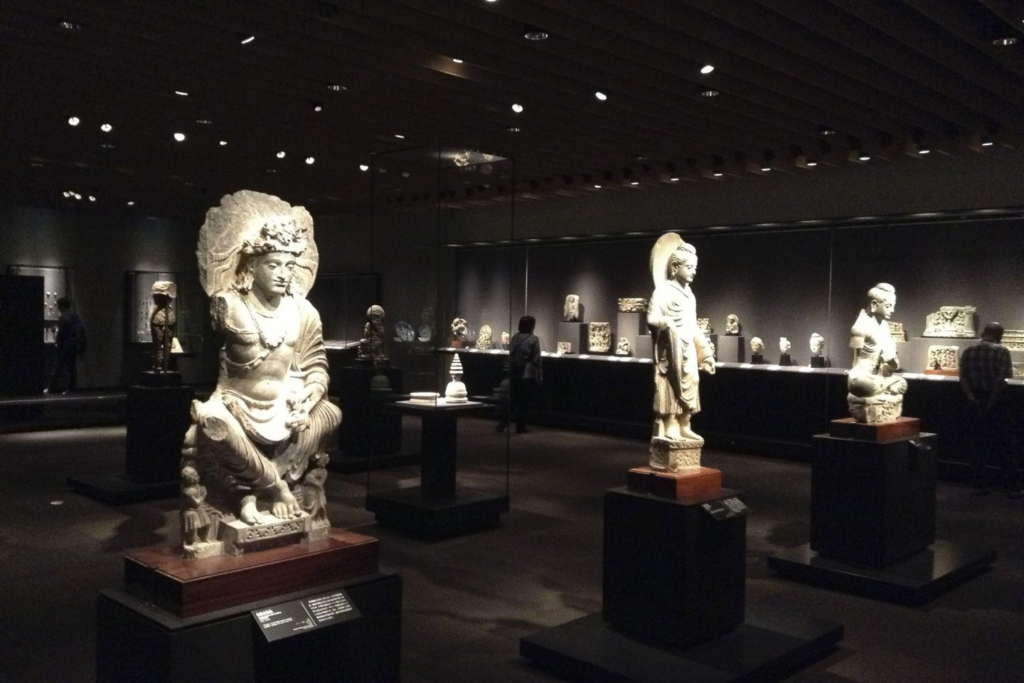
Located in Ueno Park, the Tokyo National Museum is Japan’s oldest and largest museum, housing an extensive collection of art and artifacts. The museum’s exhibits cover a wide range of topics, including samurai swords, traditional kimonos, ancient pottery, and Buddhist statues. It’s a must-visit for anyone interested in Japanese history and culture.
The museum complex consists of several buildings, each dedicated to different themes. The Honkan (main building) focuses on Japanese art, while the Toyokan showcases art from other Asian countries. The museum also has a beautiful Japanese garden that is open to the public during certain times of the year.
Travel Tip: Allocate at least half a day to explore the Tokyo National Museum thoroughly. The museum offers free English audio guides, which are highly recommended to enhance your understanding of the exhibits.
8. Nightlife in Roppongi

Roppongi is Tokyo’s go-to district for nightlife, offering a wide variety of bars, clubs, and entertainment venues. The area is particularly popular with expatriates and international visitors, making it a diverse and lively part of the city. Roppongi Hills, a large urban development, is a great place to start your evening, with its upscale restaurants, bars, and an observation deck offering stunning views of the city at night.
For art lovers, the Mori Art Museum, located in Roppongi Hills, offers contemporary art exhibitions and is open late into the evening, allowing for a unique cultural experience after dark.
Travel Tip: If you plan to explore Roppongi’s nightlife, consider using public transportation or taxis, as parking can be expensive and difficult to find. Also, be aware of cover charges at some clubs and bars.
9. Shop Until You Drop in Ginza
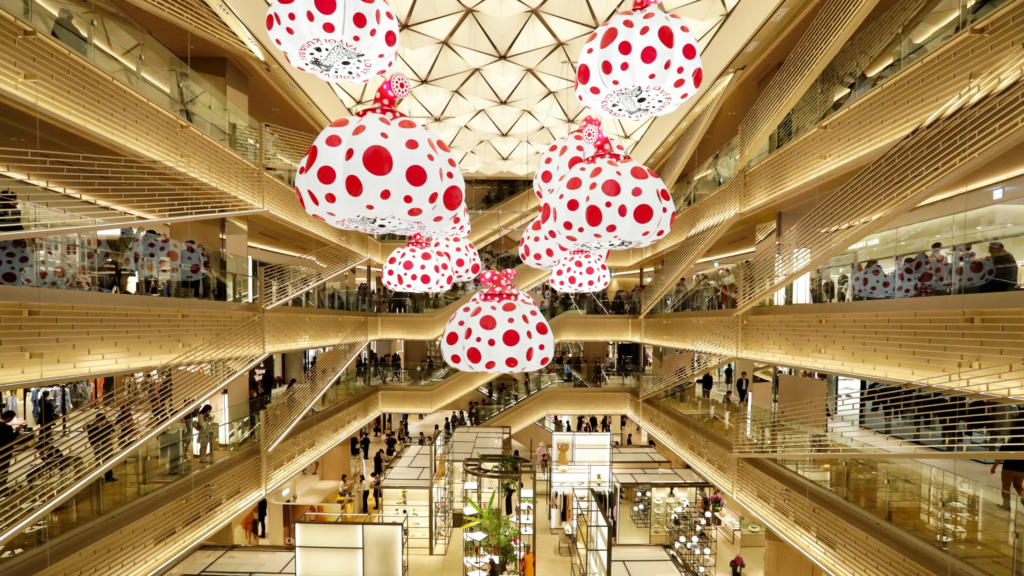
Ginza is Tokyo’s premier shopping district, known for its luxury boutiques, department stores, and high-end restaurants. It’s the place to go if you’re looking to indulge in some retail therapy. Ginza is also home to flagship stores of major brands like Louis Vuitton, Chanel, and Apple.
In addition to shopping, Ginza offers a range of cultural experiences. The Kabuki-za Theatre, for instance, is the main venue for traditional kabuki performances. Even if you don’t understand Japanese, the visual spectacle of kabuki is worth experiencing.
Travel Tip: Visit Ginza on a weekend afternoon when the main street, Chuo-dori, is closed to vehicular traffic, turning it into a pedestrian paradise. This is the perfect time to explore the area at your own pace.
10. Ascend the Tokyo Skytree

No trip to Tokyo is complete without a visit to Tokyo Skytree, the tallest structure in Japan at 634 meters. This broadcasting tower doubles as a popular tourist attraction with observation decks offering 360-degree views of the city. On a clear day, you can see as far as Mount Fuji.
Tokyo Skytree also houses an aquarium, a planetarium, and a large shopping complex called Solamachi, where you can find a variety of shops, restaurants, and souvenir stores.
Travel Tip: Purchase your tickets online in advance to skip the long lines at the ticket counter. If you’re visiting in the evening, consider opting for the Skytree’s night-time ticket to enjoy the city’s illuminated skyline.
Travel Hacks, Tips, and Advice for Travelers to Tokyo
Traveling to Tokyo can be an incredibly rewarding experience, but it can also be overwhelming, especially for first-time visitors. To help you navigate the city like a pro, here are some essential travel hacks, tips, and advice that will make your trip smoother and more enjoyable.
1. Navigating Tokyo’s Public Transportation
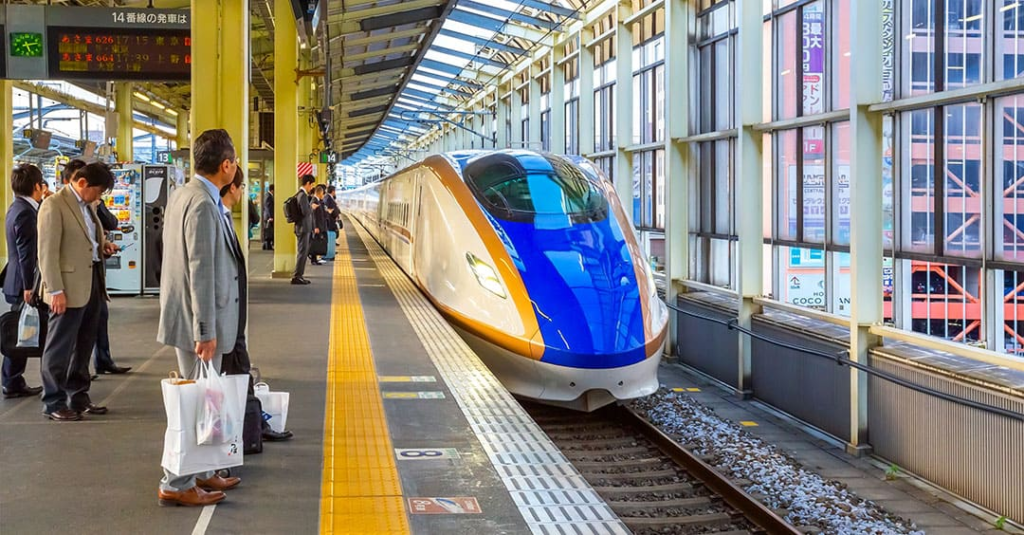
Tokyo has one of the most efficient public transportation systems in the world, but it can be confusing if you’re not familiar with it. Here are some tips:
- Get a Suica or Pasmo Card: These rechargeable smart cards can be used on almost all trains, buses, and even at vending machines and convenience stores. They save you the hassle of buying individual tickets and are a must-have for any traveler.
- Download the Japan Travel App: This app helps you navigate Tokyo’s complex train and subway system. It’s available in English and provides real-time updates, including train times and platform information.
- Avoid Rush Hours: Tokyo’s trains can be extremely crowded during rush hours (7:30 AM – 9:00 AM and 5:00 PM – 7:00 PM). If possible, plan your travel outside these times to avoid the crush of commuters.
2. Cash is Still King
While Tokyo is a modern city, cash is still widely used, especially in smaller shops, local eateries, and some temples. ATMs that accept foreign cards are available in convenience stores like 7-Eleven, FamilyMart, and Lawson.
- Tip: Carry a small amount of cash with you at all times, especially when visiting less touristy areas. Credit cards are accepted in most larger establishments, but it’s better to be prepared.
3. Stay Connected
Having internet access in Tokyo is crucial for navigating the city and staying connected with friends and family.
- Portable Wi-Fi: Renting a portable Wi-Fi device at the airport or online before your trip is a great option. These devices are compact, easy to use, and provide reliable internet throughout your stay.
- SIM Cards: If you prefer, you can also buy a local SIM card. Make sure your phone is unlocked before purchasing one, and look for data-only SIMs, which are usually the most cost-effective for short-term stays.
4. Eating Out in Tokyo
Tokyo is a foodie paradise with a wide range of dining options, from Michelin-starred restaurants to street food stalls. Here’s how to make the most of your culinary adventures:
- Try the Konbini (Convenience Stores): Tokyo’s convenience stores offer surprisingly delicious and affordable meals, snacks, and drinks. Try onigiri (rice balls), bento boxes, and fresh sushi for a quick and budget-friendly meal.
- Ramen Shops: Tokyo is famous for its ramen, and many shops use vending machines to order your meal. Simply insert cash, select your dish, and hand the ticket to the staff. It’s a quick and easy way to enjoy some of the best ramen in the city.
- Tipping: Tipping is not customary in Japan and can even be considered rude. Excellent service is the norm, and the price you see on the menu is what you pay.
5. Language and Communication
While English is becoming more common in Tokyo, especially in tourist areas, many locals may not speak it fluently. Here’s how to bridge the communication gap:
- Learn Basic Japanese Phrases: Simple phrases like “hello” (konnichiwa), “thank you” (arigatou gozaimasu), and “excuse me” (sumimasen) can go a long way in showing respect and making interactions smoother.
- Translation Apps: Download a translation app like Google Translate to help with communication. It’s especially useful for reading menus, signs, and understanding directions.
6. Accommodation Tips
Tokyo offers a wide range of accommodation options, from luxury hotels to budget hostels. Here’s how to find the right place to stay:
- Book in Advance: Tokyo is a popular destination, and hotels can fill up quickly, especially during peak seasons like cherry blossom season (March to April) and Golden Week (late April to early May). Booking your accommodation well in advance ensures you get the best options.
- Consider Staying in Different Neighborhoods: Tokyo is a vast city with many distinct neighborhoods. Consider staying in areas like Shinjuku for nightlife, Asakusa for a more traditional vibe, or Ginza for luxury shopping. Moving between neighborhoods can give you a different experience of the city.
7. Seasonal Considerations
Tokyo’s climate varies throughout the year, so packing appropriately is key:
- Spring (March to May): Cherry blossom season is one of the best times to visit Tokyo. The weather is mild, but temperatures can still be chilly in the mornings and evenings, so bring layers. Cherry blossom viewing spots can get crowded, so arrive early for the best experience.
- Summer (June to August): Tokyo’s summers are hot and humid, so lightweight clothing, sunscreen, and a hat are essential. This is also festival season, so be sure to check out local events.
- Autumn (September to November): Fall is another great time to visit, with cooler temperatures and beautiful autumn foliage. Comfortable walking shoes are a must, as this is a great season for exploring the city on foot.
- Winter (December to February): Tokyo’s winters are cold but generally dry. A warm coat, scarf, and gloves are recommended. This is also a good time to experience Tokyo’s winter illuminations and holiday events.
8. Shopping Tips
Tokyo is a shopping mecca, with everything from high-end boutiques to quirky local shops:
- Tax-Free Shopping: Many stores in Tokyo offer tax-free shopping for tourists. Look for the tax-free sign and bring your passport to take advantage of the savings. The minimum purchase amount to qualify for tax-free shopping varies, so check with the store.
- Shop Smart: If you’re planning to shop for electronics in Akihabara or fashion in Harajuku, compare prices and check reviews before making any big purchases. Some items may be cheaper online, even after factoring in shipping costs.
9. Cultural Etiquette
Respecting local customs and etiquette is important when traveling in Tokyo:
- Quiet on Public Transportation: It’s considered polite to keep conversations to a minimum on trains and buses. If you need to make a phone call, wait until you’re off the train or use the designated areas in train stations.
- Take Off Your Shoes: In many traditional places, such as temples, ryokans (traditional inns), and even some restaurants, you’ll be expected to remove your shoes. Be prepared with clean socks, and follow the locals’ lead.
- Mind Your Trash: Tokyo is incredibly clean, yet public trash cans are few and far between. It’s common practice to carry your trash with you until you find a proper disposal spot. Many convenience stores have trash bins, so you can dispose of waste there.
10. Stay Safe
Tokyo is one of the safest cities in the world, but it’s always good to be prepared:
- Emergency Numbers: The emergency number in Japan is 110 for the police and 119 for fire and ambulance services. Keep these numbers handy, just in case.
- Earthquake Preparedness: Japan is prone to earthquakes, and while Tokyo buildings are designed to withstand them, it’s important to know what to do in case of an emergency. Familiarize yourself with the nearest evacuation sites and keep an eye out for emergency exits in buildings.
Read more Top 10 Foods Must-Try in Japan








